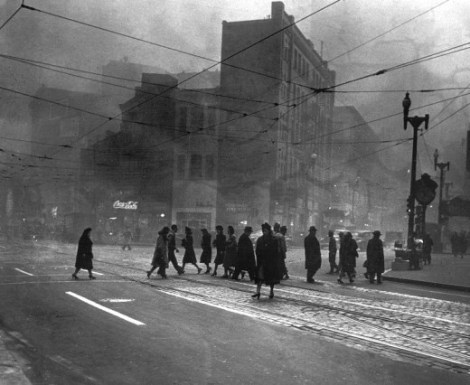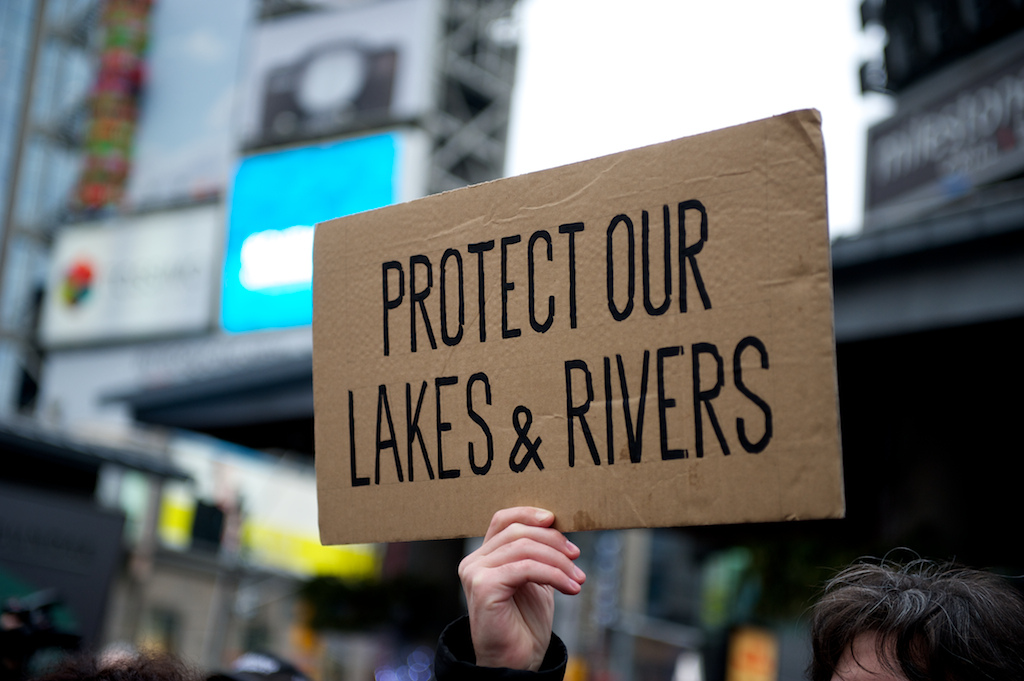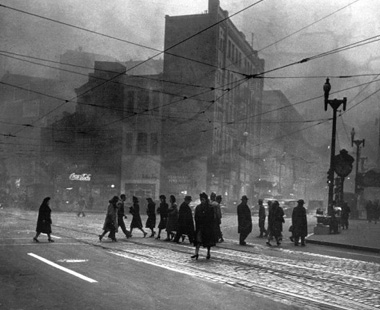When the EPA announced stricter limits on soot emissions last year, the health benefits were immediately apparent. Less soot — that is, tiny particles that result from burning fossil fuels — means fewer heart attacks, less asthma, longer lifespans. On this basis alone, the new standard is a beneficial move.

Soot and smoke in Pittsburgh during the early 1900s.
As it turns out, the move could also play a significant role in countering global warming. Researchers have determined that black carbon (soot) contributes twice as much to global warming as previously understood. From the University of Washington:
Black carbon’s role in climate is complex. Dark particles in the air work to shade the Earth’s surface while warming the atmosphere. Black carbon that settles on the surface of snow and ice darkens the surface to absorb more sunlight and increase melting. Finally, soot particles influence cloud formation in ways that can have either a cooling or warming impact.
Last year, another team of researchers proposed a novel way to curb Arctic ice melt: halting airplane trips over the region. The black carbon emitted by trans-Arctic flights lingers in the atmosphere in the area longer than it does elsewhere.
Bloomberg.com outlines other effects:
The four-year study by more than two dozen researchers also showed that black carbon causes “significantly higher warming” over the Arctic and can affect rainfall patterns in high- emitting regions such as Asia. The pollutant also has contributed to rising temperatures in mid- to high-latitude areas including the U.S. and Canada.
The article (by the aptly named “Justin Doom”) notes that soot “trails only carbon dioxide as the most dangerous climate pollutant.”
Soot pollution won’t be a trivial problem to fix. A recent report suggested that some 1,200 new coal plants are planned around the world, and coal consumption for power production is a big generator of soot. Earlier this week, we noted that soot pollution in Beijing was spiking as electricity production increased, though levels have since receded. Diesel engines, another major contributor to black carbon pollution, pose another set of challenges.
Nonetheless, you can’t cure a disease until you diagnose it. Here’s our diagnosis: Soot is dangerous — in more ways than we knew.



